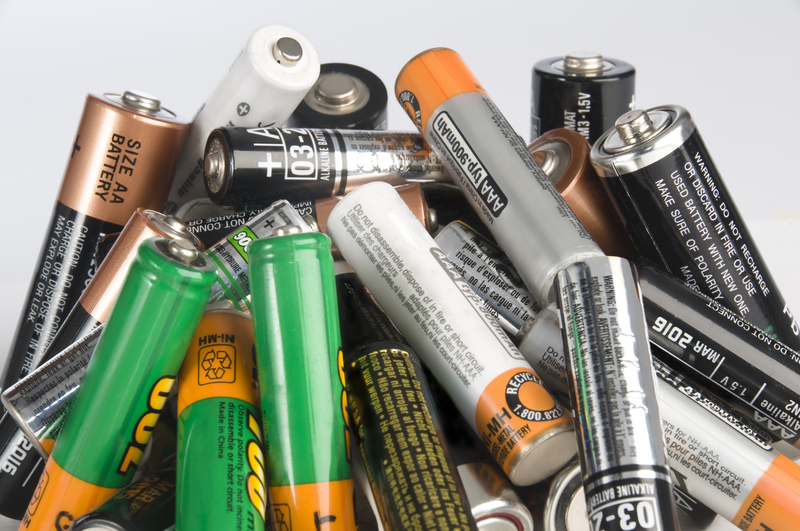Sustainable Methods for PPE Waste Disposal
The COVID-19 pandemic and other global health crises have underscored the necessity for Personal Protective Equipment (PPE) such as masks, gloves, and gowns. However, with their mass usage comes a growing environmental challenge: PPE waste disposal. Traditionally, PPE waste management has relied on incineration and landfilling -- both of which have negative impacts on our planet. Exploring and adopting sustainable methods for PPE waste disposal is now more urgent than ever. This comprehensive guide delves into various eco-friendly strategies, their benefits, and how they contribute to a greener, healthier world.
Understanding PPE Waste and Its Environmental Impact
PPE waste includes single-use masks, gloves, face shields, gowns, and shoe covers, primarily composed of non-biodegradable plastics like polypropylene and polyethylene. The surge in demand during pandemics or in healthcare settings has resulted in millions of tons of additional plastic waste annually. The environmental impacts of improper PPE disposal include:
- Increased plastic pollution in oceans and on land
- Release of toxic chemicals and microplastics
- Harm to marine life and wildlife
- Greenhouse gas emissions from incineration
- Risks of infection and pathogen spread
For these reasons, identifying and implementing sustainable methods for PPE waste disposal is crucial for global environmental health.

Main Challenges of PPE Waste Disposing
- Contamination Risks: Used PPE may carry pathogens, making traditional recycling difficult.
- Material Complexity: Most PPE comprises mixed materials, impeding standard recycling.
- Volume Overload: Healthcare centers and communities generate vast amounts of PPE waste, straining disposal systems.
- Chemical Additives: Some PPE items contain additives or dyes requiring special handling.
Why Are Sustainable PPE Waste Solutions Essential?
Adopting eco-friendly PPE waste management strategies helps mitigate the strain on waste systems, lowers carbon footprints, and protects both human and environmental health. Additionally, these solutions pave the way toward a circular economy and a responsible approach to public health.
Leading Sustainable Methods for PPE Waste Disposal
Today's advancements in technology and growing environmental awareness have led to several sustainable alternatives for PPE waste management. Here, we break down the most promising sustainable PPE waste disposal methods that can be implemented at various scales.
1. Mechanical Recycling of PPE Waste
Mechanical recycling involves sorting, shredding, and melting down clean PPE items for reuse in manufacturing new plastic products. This approach is suitable when PPE waste is not contaminated by biological materials.
- Advantages: Reduces the demand for virgin plastics and prevents plastics from reaching landfills or oceans.
- Challenges: Requires thorough decontamination, sophisticated sorting processes, and is limited to certain types of clean PPE.
- Applications: Road construction materials, park benches, building materials.
2. Chemical Recycling and Pyrolysis
Chemical recycling methodologies such as depolymerization and pyrolysis break down plastics in PPE into their original monomers or into fuel-like substances.
- Advantages: Enables the recycling of mixed and contaminated plastic PPE items.
- Environmental Benefit: Converts plastic waste into useful chemicals or fuels, reducing overall pollution.
- Considerations: Requires significant investment in specialized facilities.
3. Energy Recovery Techniques
- Incineration with Energy Capture: Advanced incineration plants can capture energy released from burning PPE waste in the form of electricity or heat, minimizing greenhouse gas emissions via advanced filtration.
- Waste-to-Energy (WTE): This method minimizes landfill use and offsets fossil fuel consumption.
- Important: Filtration and emission controls are vital to avoid environmental contamination from dioxins or heavy metals.
4. Biodegradable and Compostable PPE Innovations
The shift towards biodegradable masks and gloves is accelerating. PPE made with polylactic acid (PLA), cellulose, or other natural fibers can be composted industrially or even at home.
- Advantages: Breaks down naturally, returning nutrients to the environment.
- Current Limitations: Not all compostable PPE is suitable for high-risk environments.
- Future Potential: Ongoing research is producing more durable and effective compostable PPE for healthcare and public use.
5. Sterilization and Reuse Programs
Instead of disposal, some regions are adopting sterilization technologies such as vaporized hydrogen peroxide, ultraviolet light, or autoclaving to safely disinfect PPE for limited reuse.
- Advantages: Extends the life of PPE, reducing the volume of waste generated.
- Limitations: Suitable for specific types of PPE and limited numbers of reuse cycles.
- Environmental Impact: Diminishes demand for new PPE production and lowers waste management needs.
6. Upcycling and Creative Repurposing
Upcycling PPE waste involves turning used masks, gowns, or gloves into raw materials for innovative products, such as construction bricks, road surfaces, or furniture. This not only diverts waste from landfills but gives it a new life in creative ways.
- Example: Researchers in Australia have incorporated shredded face masks into pavement, improving its durability while solving PPE waste challenges.
- Community-led initiatives: Artistic or architectural installations using sanitized PPE items.
Best Practices for Communities and Healthcare Facilities
To ensure that sustainable PPE waste disposal becomes a reality, institutions and individuals must adopt best practices. Here are actionable guidelines:
- Segregate at Source: Use clearly labeled bins for PPE collection and separate from general and recyclable waste.
- Decontamination Protocols: Prioritize methods that render used PPE safe for further processing or recycling.
- Partner with Eco-Friendly Vendors: Work with waste management companies specializing in eco-friendly PPE waste disposal.
- Promote Biodegradable PPE: Where feasible, opt for compostable or reusable PPE alternatives.
- Educate Staff and Public: Inform all personnel and community members about correct segregation, disposal, and the environmental impact of PPE waste.
- Monitor and Audit: Regularly review PPE waste streams and disposal outcomes for continuous improvement.
Role of Regulatory Bodies and Policies
Government agencies and policymakers play a pivotal role in shaping a sustainable future for PPE disposal. Some essential actions include:
- Implementing Strict Disposal Guidelines: Establish clear standards for segregating, transporting, and treating PPE waste.
- Incentivizing Green Technologies: Provide grants or tax breaks for organizations employing sustainable PPE waste management methods.
- Promoting Research and Development: Fund the development of new materials such as compostable PPE and efficient recycling processes.
- Public Awareness Campaigns: Empower individuals to make informed decisions regarding PPE use and disposal.
Addressing Myths and Misconceptions About PPE Waste Disposal
Myth 1: "All used PPE must be incinerated."
Reality: While incineration is effective for contaminated medical PPE, many items can be sterilized, recycled, or upcycled with the right facilities.
Myth 2: "Sustainable PPE disposal is too expensive or complex."
Reality: Investing in eco-friendly PPE waste solutions often leads to long-term cost savings, resource recovery, and environmental preservation.
Myth 3: "Compostable PPE is less effective."
Reality: Recent advancements in materials science have led to effective, safe, and certified compostable PPE suitable for various settings.
Simple Steps Everyone Can Take for Greener PPE Waste Management
Every individual plays a role in sustainable PPE disposal:
- Follow local guidelines: Understand community-specific PPE waste management protocols.
- Choose reusable PPE when possible: Opt for washable cloth masks and gowns.
- Never litter: Avoid discarding PPE in public spaces where it contributes to pollution.
- Support eco-friendly brands: Purchase PPE made from recyclable or compostable materials when available.
- Raise awareness: Educate family, friends, and coworkers about sustainable PPE waste disposal methods.
Future Trends in Sustainable PPE Waste Solutions
The global drive towards sustainable PPE waste management has accelerated the development and adoption of innovative disposal and recycling methods. Some emerging trends include:
- Smart Collection Systems: IoT-enabled PPE bins that monitor fill levels and contamination for efficient pickup and routing.
- Global PPE Recycling Networks: Collaborative platforms connecting organizations for large-scale collection and processing.
- Investment in Green Chemistry: Production of next-generation PPE from organic and fully biodegradable compounds.
- Enhanced Public-Private Partnerships: Merging government support with private sector expertise for rapid innovation adoption.

Conclusion: The Path Forward for Sustainable PPE Waste Disposal
Sustainable methods for PPE waste disposal are critical to preserving our planet's health, reducing pollution, and conserving valuable resources. By transitioning towards recycling, composting, sterilization, upcycling, and innovative material use, both individuals and organizations can make a substantive positive impact. It's essential to support policies and practices that prioritize responsible PPE waste management and strive for a circular economy in healthcare and beyond.
Join the movement for eco-friendly PPE waste solutions. Together, we can safeguard both public health and the environment for future generations.
Frequently Asked Questions: Sustainable PPE Waste Disposal
- What PPE waste can be recycled?
Clean, uncontaminated items made of single-type plastics, such as certain masks and face shields, can be mechanically recycled when processed in specialized facilities. - Are there compostable PPE products?
Yes! Compostable masks and gloves made from PLA, bamboo fibers, and other plant-based materials are increasingly available. - How do I safely dispose of used PPE at home?
Place used PPE in a separate bag, seal it, and follow your local community's waste disposal instructions. When possible, support collection programs for sterilization, recycling, or composting.
For more information on sustainable methods for PPE waste disposal and practical guidance, connect with your local waste management agency or environmental health organization.
